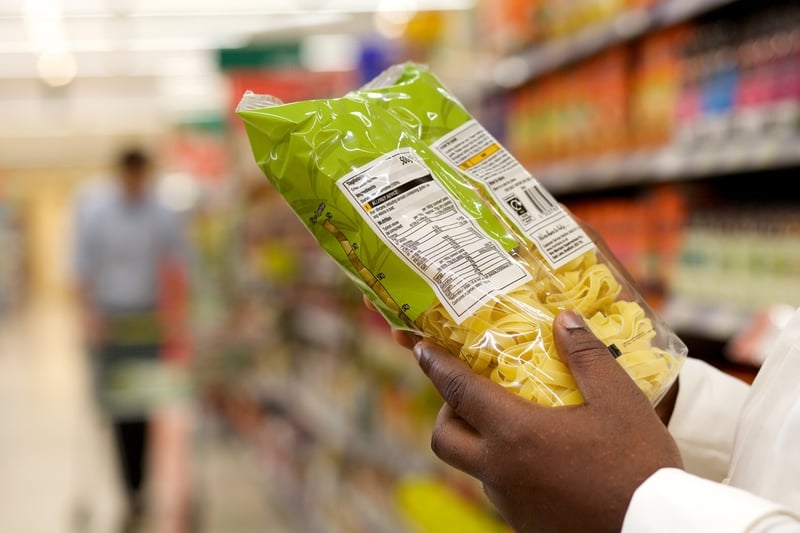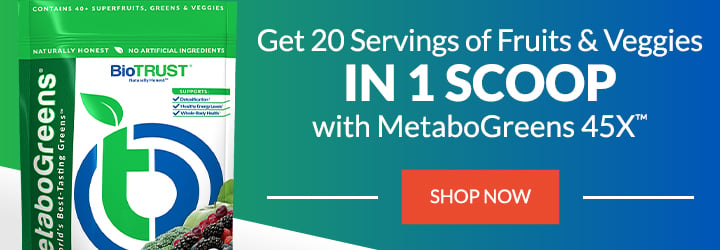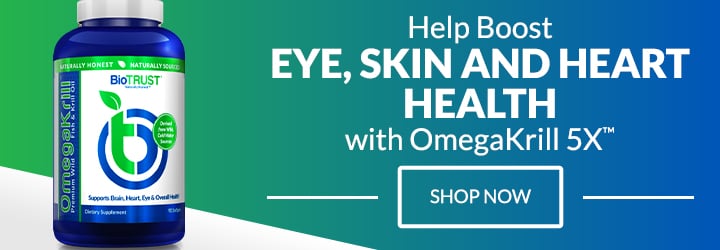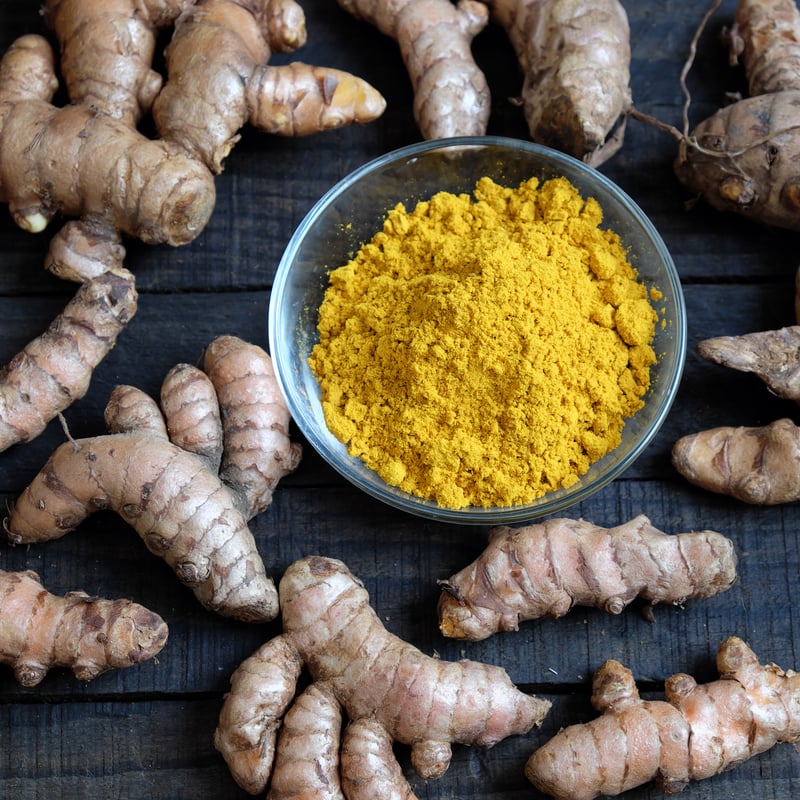18 Health Food “Buzzwords” And What They REALLY Mean

Food: You need it to survive, for energy, to feel good, and for pleasure. But sometimes, when you walk through the grocery store, it can feel like you’re in a foreign land. Labels are loaded with jargon. Health claims and buzzwords are plastered on everything from “nutritious” cereal bars to sodas to packaged chips to lure you in and try to convince you that you’re nourishing your body.
Food buzzwords can make you think a food is good for you (even when it isn’t). Organic, non-GMO, sugar-free, gluten-free, fat-free, antioxidant, natural… and on and on. What do all of these buzzwords mean? And do they really translate into a healthier you? Or, will they sabotage your dieting and health goals?
Let’s dive under the marketing claims and discover what these common terms mean, so you can more easily navigate past the processed junk and straight toward the foods that really do a body good.
18 Health Food Buzzwords and What They Mean
1. Antioxidants
Antioxidants are compounds often found in whole vegetables, fruits, and herbs, which often produce said antioxidants when faced with some form of environmental stress, such as UV radiation, drought, starvation, predation, and so on. The crazy thing, believe it or not, is that these same antioxidants can help you (via a process scientists called xenohormesis) battle against various forms of stress by supporting the body’s own antioxidant systems, as well as anti-aging, stress resilience, and repair processes.
For example, antioxidants can help the body manage excess free radicals, which are created naturally in the body from the air we breathe to the food we digest to environmental toxins and more. Although free radicals are necessary and beneficial in proper amounts and the right times, when unchecked, they can damage cells and DNA and accelerate diseases.
You may now see antioxidants advertised on various packaged products in the grocery store. Skip the hype, though, and go directly to the source—that is, to real, antioxidant-loaded whole foods like berries, kale, cabbage, beets, beans, spinach, coffee, and even dark chocolate.
2. Artificial-Free or No Artificial Additives
If it’s not found in nature, can it actually be considered food? According to some manufacturers, the answer is somehow yes. So, this claim is worth watching for as the FDA defines artificial ingredients as those “not found in nature and therefore synthetically produced” as well as ingredients that are more economically produced synthetically.
3. Artisanal
Whether you’re looking at water, bread, pickles, pasta, cheese, or any other food, when you see the word “artisanal,” you may start thinking about small batches, craftwork, furniture, or perhaps more toward the stereotype of a kale-munching, bearded, beanie-wearing, bread-kneading yuppy… or hippy… er… “yippy”… at the local farmer’s market.
While the word artisanal can conjure up different meanings, if you see it at your local grocery store, it likely means… well, nothing. By definition, artisanal does refer to products made in small, limited batches, using traditional methods, but when it’s found on mass-produced products, it’s more likely just a marketing tactic. Yes, even when it’s someone’s “grandmother’s” or “old-world” recipe.
Of course, there are true small producers of artisanal goods, and not all manufacturers are taking advantage of the term. It just doesn’t hurt to be a bit skeptical when you come across artisanal foods, especially as they continue to increase in popularity.
4. BPA-Free
BPA, or bisphenol A, was (and still is) ubiquitous. It’s found as a component of many plastic bottles and as the lining for many canned foods (to prevent the foods from tasting like the metal they’re stored in). Unfortunately, even small amounts of BPA may act as an “endocrine disruptor,” mimicking reproductive hormones, which may “feminize” men (causing them to be softer and even increase fat tissue on the chest) and may increase the risk of various diseases like asthma, ADHD, diabetes, infertility, obesity, and even cancer.
BREAKING: US Doctor: “Eating This Every Day Can Snap You into Ketosis”
Now you know why you see “BPA-free” listed prominently on packaging. Unfortunately, we don’t yet know if the chemicals used in place of BPA are actually a better alternative or if they’ll someday be associated with similar issues.
While it can seem virtually impossible, the best answer is to avoid plastic packaging as much as possible and choose glass jars or cardboard boxes whenever possible instead. In the meantime, you can also look for BPA-free on the label or use the Environmental Working Group’s helpful database to look up your favorite products to ensure they aren’t contaminated with BPA.
5. Cage-Free or Free-Range
These terms lead people to think of chickens running loose on the farm, chasing after insects, and living their best lives. Unfortunately, that’s often not the case. Cage-free just means chickens are living in a big barn (typically in tight quarters). Meanwhile, free-range means there’s a door on the barn that the chickens may or, more likely, may not use to go outside.
Better terms to look for to identify higher-quality eggs and an improved quality of life for the chickens they come from are “organic” or “pasture-raised.”
6. Detox or Cleanse
Feeling sluggish, unhealthy, bloated, or just want to drop weight? Then it may be time to detox (aka cleanse). Or not. You see, your body already has organs—e.g., the kidney and liver—specifically designed to do a fantastic job of naturally detoxing the body by filtering out toxins, waste, and byproducts.
Instead of buying the latest detox juice, tea, vinegar, etc., provide your body with the nutrition it needs to naturally detox. That is, eat plenty of vegetables, fruits, and other minimally-processed plant-based foods, as well as adequate high-quality protein from healthy sources. Also, lower your toxic burden/load by watching what you put into your body.
7. Energy Boosting
Who doesn’t want more energy, right? (I know I do!) Unfortunately, products boasting more energy tend to be heavy on caffeine, sugar, or both. While you might get a temporary jolt, neither provide long-lasting energy (or fix an underlying problem).
Instead, enjoy more long-lasting energy levels by practicing healthy sleep hygiene, supporting your natural circadian rhythms (with sunshine first thing in the morning, for example), drinking plenty of water, getting regular exercise, and eating nutrient-dense meals.
8. Gluten-Free
If you are gluten-intolerant, and certainly if you have celiac disease, this is one of the most important claims to watch for as the protein (gluten) found in many cereal grains can cause serious issues. However, gluten-free has become a trend that all sorts of people are watching for, whether they need to or not.
For the majority of people, what’s much more important is whether a grain-containing food is refined or not. By avoiding foods made with ultra-processed, white, refined flours—such as, breads, pastas, and baked goods, for example—and choosing higher fiber, whole-grain options instead (which may or may not contain gluten), you may better support weight loss, lower chronic inflammation, and improve overall health.
9. GMO-Free or Non-GMO
Most people have heard the term (GMO), but few know what it actually means. GMO stands for “genetically modified organism.” While humans have been playing with plant genetics for thousands of years (for example, breeding the wild grass teosinte until it became maize or corn over several generations), scientists have taken it to a new level by manipulating or altering the genetic material in a lab rather than in the soil.
At this time, there’s no evidence that GMOs pose health risks themselves, and GMO plants may provide greater yields or better withstand drought or other intense environmental conditions. GMOs, however, are relatively new to the human diet—at least in the volume to which we’re presently exposed—so we may not yet know the long-term implications on gut health or how the organisms react to the body cells.
The biggest issue, however, with GMOs—especially corn and soybeans—is that they have been modified to be resistant to pesticides and herbicides. Thus, these plants are often heavily doused with chemicals both before and after harvest. As a result, these chemical concoctions are passed onto consumers, and many have been found to be not so healthy and potentially dangerous.
If you are reaching for soy- or corn-containing products especially, it’s a good idea to look for those that don’t contain any GMOs to limit the consumption of pesticides and herbicides.
10. Grass-Fed
If you’ve ever driven out west, you may have seen cows meandering through pastures, grazing on pristine grass, and looking quite healthy and happy. You may have also tried to hold your breath as you drove past a very unpleasant-smelling and downright depressing-looking feedlot packed with animals that look neither happy nor natural.
As your eyes tell you, those caged cows fattened up on an unnatural diet are more likely to be sick and unhealthy. Thus, as a precaution (and especially once ill), they’re also often loaded up with growth hormones, steroids, and antibiotics to help them withstand such a horrid environment.
It shouldn’t be surprising that cows that are allowed to frolic and consume their natural food (i.e., grass) are healthier and thus provide more nutritious milk and meat. Research has found that this is the case: grass-fed cows are leaner, and their meat and milk is lower in calories yet higher in healthy omega-3 fatty acids as well as conjugated linoleic acid (CLA), another fatty acid that’s associated with health benefits like improved blood sugar regulation, reduced body fat, and decreased risk of heart issues.
Don’t just look for grass-fed beef, though, as many cows spend much of their lives in pastures, only to be transferred to feedlots to be fattened up with corn for their last few months of life. To ensure you’re getting the highest quality meat (from humanely-treated animals), look for 100% grass-fed and finished.
11. Local and In-Season
One of the best ways to ensure your food provides the most nutrition for your buck is to buy locally and seasonally grown and raised foods. Fresh-picked produce is typically the highest you can find when it comes to flavor and nutrition. It’s also likely to be more affordable. And it’s good for your community, local farms, and your local economy. (Can you handle that much winning?)
The terms, however, aren’t all that well-regulated, and local can mean “within 400 miles” or just within your state. So, the best way to ensure you’re getting local, in-season options is to head to your local farmer’s market and get to know the people who are out there growing the food. Or, if you’re at the supermarket, manufacturers often list the place of origin, so you can see how far your food traveled to get to you.
12. Low-Fat (Reduced-Fat or Fat-Free)
Years ago, I came across a bag of jelly beans advertised as “fat-free.” Sure, they’re “fat-free.” All jelly beans are fat-free. But as jelly beans are primarily made up of sugar, they’re far from healthy, and along those lines, they’re a good example of how health-hype is used to sell products even when it’s completely ridiculous.
While that is an extreme example, foods that have had the fat removed are often then filled with sugar and fillers to make them more palatable. And that often means that the “fat-free” or “low-fat” versions of a food are even less healthy than the original.
What’s more, we now better understand how important fat is to a healthy diet as fats are necessary as a structural component of cells, help the brain develop and function, provide energy, and increase the absorption of some vitamins, and certain types of fats, believe it or not, are vital to a healthy heart and blood vessels.
13. Natural
It says “natural,” so it must be good, right? Unfortunately, the term “natural” isn’t regulated at all, so the claim can be added to just about any label. The idea is that the product is free from added colors, flavors, or synthetics, but that doesn’t mean it’s healthy or even all that natural. If you see the word natural on the label, make sure you flip it over and read through the nutrition and ingredients panels to find out what’s actually in the product.
Is “All Natural” any better? Nope. Again, the phrase isn’t regulated and has been used rather loosely by companies just looking to “greenwash” their brands (that is, make them look healthier or more sustainable than they actually are).
14. Omega-3 Fatty Acids
If you have embraced the fact that fat can, in fact, be your friend, then it’s likely at least partly because of this exceptional category of fatty acids. Found in fatty fish like wild-caught salmon, mackerel, and sardines, seafood like oysters, and algae as well as flaxseeds, chia seeds, and walnuts, omega-3 fatty acids are one of the health highlights that have earned the hype.
Omega-3 fats are among the most well-researched nutrients and have been shown to support a healthy response to inflammation, help ease pain, support joint, bone, and heart health, and more.
15. Organic
For a food to be certified organic, it must be produced without chemical fertilizers, pesticides, fungicides, or herbicides that aren’t deemed safe. It can also not contain genetically modified organisms (GMOs), sewage sludge, or radiation. If it’s an animal product, there are additional rules to allow the animal to graze in a pasture.
Organic foods tend to be pricier as there are also costs for a food to be certified as organic. Is it worth it? Often, the answer is yes. Organic dairy and meat have been found, for example, to provide up to 50% more omega-3 fatty acids. Organic plant foods have also been found in studies to provide higher levels of antioxidants and other nutrients. Choosing organic can also help lower your exposure to pesticides and other chemicals used on conventional farms that we may not understand the long-term effects of yet.
It’s also worth noting that less than one percent of farmland is organic, so the more often you purchase organic products (i.e., the higher the demand), the more it encourages farms to use organic methods, which could ultimately improve your health, the farmer’s health and bottom line, and the health of the planet.
That said, if your choice is to eat a conventional vegetable or no vegetable at all, you’re still better off eating the vegetable. And if you get your meat or produce from a family farm, even if they have a chemical-free, free-range farm, they may not be willing (or able) to invest the cash to become certified organic, or they make be transitioning to organic as the process can take a good three years to complete. In that case, it’s a better idea to get to know your local farmer and their farming values—you may get an even higher quality option than organic.
As well, if you’re reaching for a box or package of processed foods made with organic ingredients, you’re still eating packaged, processed foods. Organic or not, it’s not a health food. And it’s likely little or no better than the box next to it.
16. Sugar-Free
You know you want to decrease your consumption of sugar, so you naturally gravitate toward sugar-free foods. After all, sugar-free foods contain less than 0.5 g of sugar per serving.
Unfortunately, it could, however, contain artificial sweeteners, which may come with their own list of side effects.
Instead of looking for the words “sugar-free,” take the time to look at the sugar quantity listed on the Nutrition Facts, and then take it a step further to read through the ingredients to see if there are hidden sugars, artificial sweeteners, or other ingredients that aren’t all that great for you.
17. Superfoods
This word likely has you thinking that you’re going to get a hefty dose of nutrition with just one food, and that may be true. Some superfoods are seriously nutrient-dense with higher levels of antioxidants, phytonutrients, etc. But in all honesty, the term itself is just marketing hype with little or no real scientific basis. Good health is not about consuming more of one single superfood but rather consuming a wide variety of whole, minimally processed foods, such as colorful vegetables and fruits, to get a range of nutrients.
Nonetheless, it is worth it to include some of the “superfoods”—like blueberries, spirulina, cinnamon, beans, avocados, and whey protein—regularly in your diet simply because they are so nutrient-dense.
18. Whole Wheat/Whole Grain
Avoid the white and go for whole grains instead, and you’ll be rewarded with more fiber and nutrients, right? For the most part, yes. However, many products contain or are “made with” whole grains, but the majority of the food is still made with refined white flour. Check the label to ensure it’s made with 100% whole grains to ensure you are getting the fiber and nutrient benefits. Better yet, just go for the whole grain itself and prepare it in a traditional way (e.g., soaking, sprouting, fermenting, etc.).
“Multigrain” is a similar health buzzword, but it really means nothing. The grains used can be higher quality whole grains or refined “junk” white flours from wheat, corn, etc. Again, look for “100% whole” instead.
In truth, these buzzwords can be found on healthy foods that really do fit into your diet. Just don’t use these types of words alone to make your decision. Pick up the package, flip it around, and dig into the details of the nutrition facts panel and ingredients declaration to see if it’s more of a dietary deception than a health highlight.






 7 Signs Your Body is Seriously Low on Collagen (not just wrinkles)
7 Signs Your Body is Seriously Low on Collagen (not just wrinkles) Health Expert: "Turmeric Doesn't Work (unless...)"
Health Expert: "Turmeric Doesn't Work (unless...)" 3 Warning Signs Your Probiotic Supplement is a Total Waste
3 Warning Signs Your Probiotic Supplement is a Total Waste

